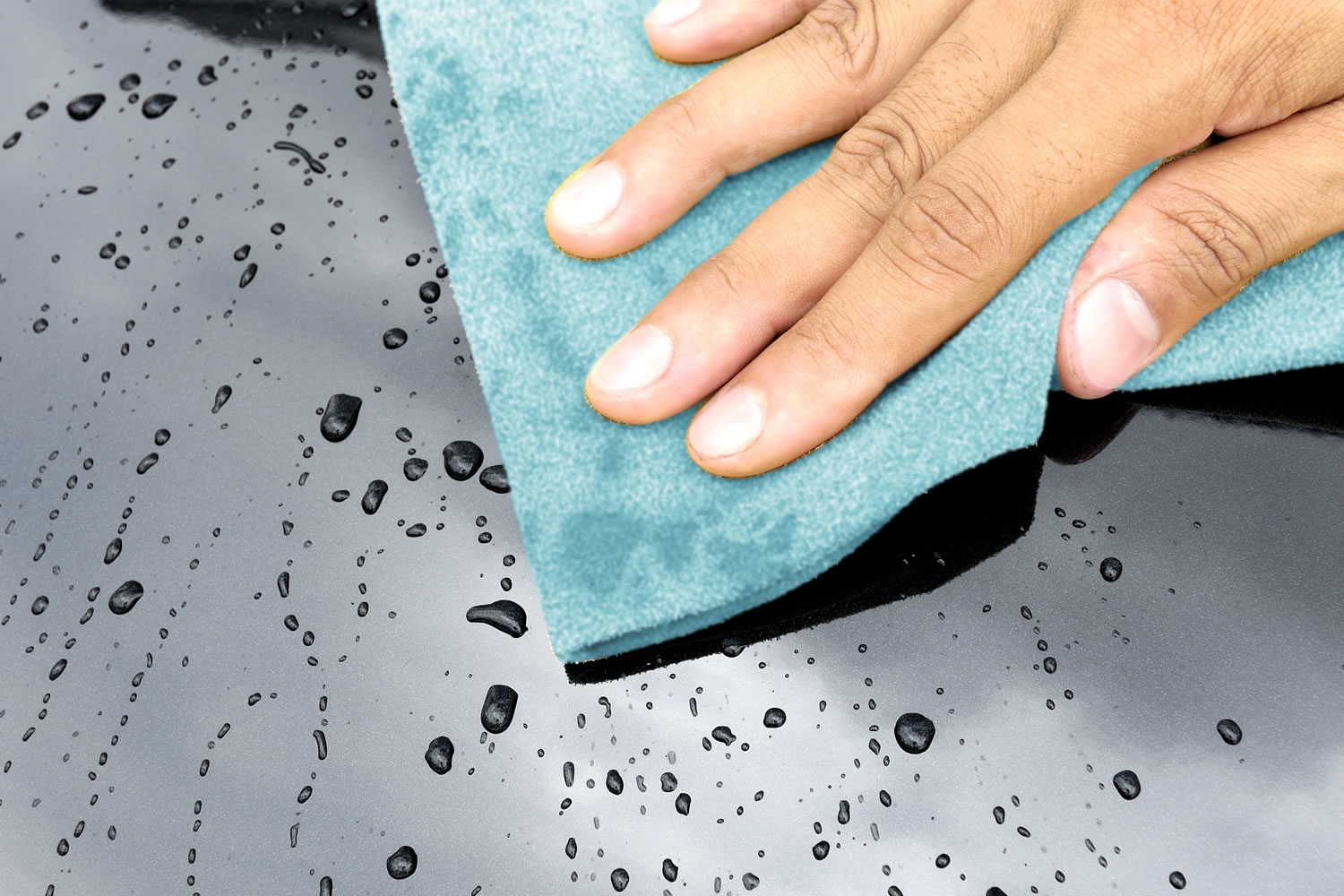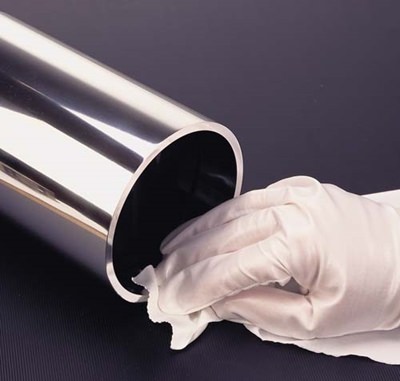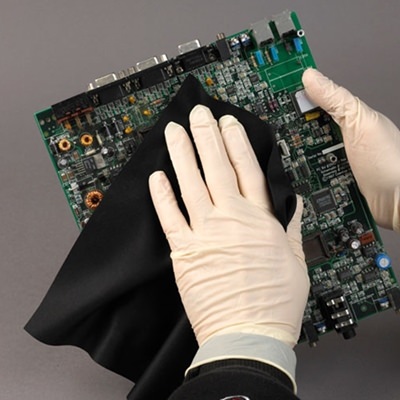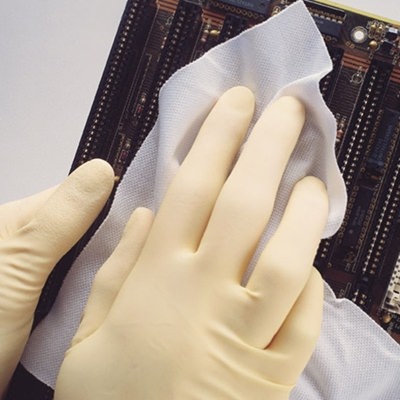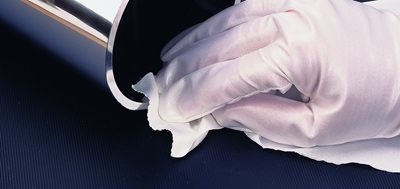In semiconductor facilities, cleanrooms minimize environmental contamination's impact on product yields. Manufacturing companies invest significantly in their construction and decontamination, as per desired ISO class levels. Among different physical methods of decontaminating cleanrooms, wiping proves highly efficient as it physically captures and retains residues without dispersing them.
To ensure decontamination, manufacturers look for certain Key Performance Indicators (KPIs) (e.g., structure, fabric, density, and sorption capacity) while selecting wipers. For critical cleaning applications specifically, companies consider sorption capacity as the most important indicator. A higher sorption capacity implies that the wipe can handle more mess before needing replacement. Therefore, the question at hand is how to maximize the sorption capacity?
This article characterizes wipers based on their sorption capacities, demonstrates the significance of wiping as process, and compares wiper structures. To materialize the discussion, a compelling case study assists manufacturers in making informed choices. The article finally wraps up by highlighting pertinent Chemtronics products to support manufacturers in their selection process.
Importance of Wiping Materials for Cleanrooms
The cleanliness of a cleanroom depends on the materials used and the processes carried out. Methods like vacuuming, compressed gas, and irrigation can have unintended consequences, potentially compromising cleanliness [1]. Figure 1 depicts different kinds of surface contaminations. It is crucial not only to pick up dirt, contamination, and particles but also to securely trap and physically remove them from the cleanroom.
Studies have shown that capillary force is the primary binding force for particles on a surface. Wiping exerts pressure (100 psi) on the surface, which helps overcome the capillary forces and aids in particle removal. Using a wipe saturated with a low surface tension fluid such as alcohol reduces this force, making particle removal more effective [2].
It is easy to select wiping materials based on their sorption capacities and compatibility with specific cleaning agents, allowing for customization according to cleanroom requirements.
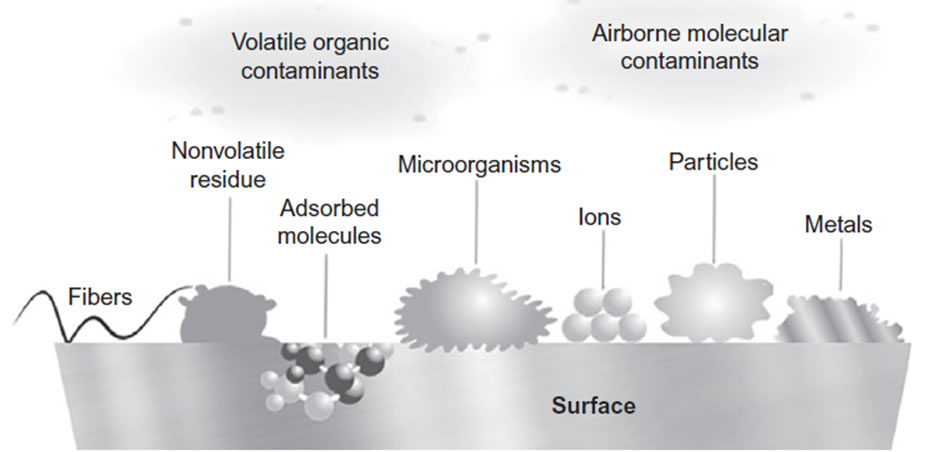
Figure 1: Types of surface contaminations [1]
Cleanroom Wiper Structures
Based on the manufacturing method and structure, wipers have four categories:
Knit Wipers
Knit fabric is made through the interlocking of yarn loops and is highly adaptable for product development as shown in Figure 2. Knitting machines offer the advantage of easily adjusting design specifications, even with small quantities of material. This allows for efficient and cost-effective product development compared to other methods that necessitate larger production runs and face challenges in swiftly modifying design specifications. Generally, knitted wipers are preferred in most critical cleaning applications [1].

Figure 2: Yarn interlocking loops in knitted wipers [1]
Woven Wipers
Woven fabrics involve intersecting yarns at right angles. Figure 3 depicts this structure. Unlike knit fabrics, woven material undergoes more complex preliminary steps before weaving. This process operates on a larger scale and tends to be more time-consuming and expensive. In broad terms, woven fabrics are characterized by less stretch and greater density compared to knits, which sometimes makes cleaning tasks more difficult as compared to knit wipers [1].

Figure 3: Woven wiper patterns [1]
Nonwoven Wipers
Nonwoven fabrics are structures formed by mechanically bonding fibers randomly. They allow for high-speed, cost-effective production compared to traditional cleanroom fabrics. However, their origin in consumer products historically posed cleanliness challenges. Unlike processed options like laundered, knit polyester wipers, nonwoven fabrics do not undergo additional cleaning after manufacturing, leading to higher particle counts and ion values. Consequently, they are generally not recommended for ISO Class 4 or cleaner environments [1].
Foam Wipers
In contrast to conventional wiper materials where fibers physically lock to capture liquids, foam is created by incorporating gas into a polymer matrix during its chemical formation. This is shown in Figure 4. However, foam, even when laundered, may not meet the cleanliness standards for critical applications. Generally, due to their manufacturing process and design, foam materials tend to have more particles than standard cleanroom wiper materials like laundered synthetic wipers. Nonetheless, they may be cleaner than certain types of nonwovens.

Figure 4: Foam wiper structure [1]
Sorption Capacity: A Case Study
Sorption capacity of a wiper refers to its ability to absorb and hold onto liquids or particles. It quantifies the maximum amount of a substance, such as a liquid or particles that a wiper can effectively retain before reaching its saturation point. A wiper with a higher sorption capacity can absorb and hold more material, making it more efficient for tasks like cleaning up spills or wiping surfaces. The sorption capacity of a wiper depends on its fabric density, specific weight, and fabric structure.
The case study in [3] analyses the sorption capacities of different wipers by varying the fabric density, specific weight, and fiber structure. Figure 5 shows a summary of wipers used in the experiment. The organic solvents used for this experiment are Benzene, Toluene, Xylene, Isopropyl Alcohol, Formamide, and Ethlyene Gylcol.
| Sample no | Material | Fineness (denier / filament) |
Contruction | Weight (g/m^2) | Thickness (mm) | Wale / course density (no./inch) |
| A | Polyester | DTY 75 / 72 | Knit | 170 | 0.56 | 56 / 52 |
| B | Polyester | DTY 75 / 72 | Knit | 163 | 0.56 | 43 / 48 |
| C | Nylon / Polyester | 50 / 28 | Knit | 150 | 0.39 | 60 / 55 |
| D | Nylon / Polyester | 50 / 28 | Knit | 131 | 0.38 | 58 / 53 |
| E | Nylon / Polyester | 75 / 28 | Knit | 213 | 0.55 | 64 / 62 |
| F | Nylon / Polyester | Warp: DTY 75 / 48 Weft: DTY 75 / 36 |
Woven | 134 | 0.37 | 86 / 54* |
| DTY: draw-textured yarn, *density = (warp/weft) | ||||||
Figure 5: Properties of wipers used in experiment [3]
Fibrous Assembly Structure vs Sorption Capacity
Knit and woven specimens were chosen to study how the arrangement of fibers in the structure affects sorption capacities. Samples D and F, made of the same materials, showed only slight variations in thickness and filament fineness. Their differing densities arose from the distinct fiber arrangement, prompting the investigation. The innate sorption capacities and the findings are illustrated in Figure 6. Notably, sample D demonstrates a greater sorption capacity than Sample F. This implies that Sample D had more pores and gaps available for solvent absorption, owing to its more aerated structure. Results with remaining solvents showed the same trend, and it is evident that knitted wipers possess better sorption capacity then the woven ones [3].
Sample Density vs Sorption Capacity
Among the knit structure wipers, those with lower density possess higher sorption capacity. This is because sample B demonstrated a greater sorption capacity compared to Sample A. This outcome can be attributed to the increased number of spaces between the fibers in Sample B, which allows for greater solvent retention [3]. This is a direct result of Sample B having a lower fabric density. Figure 7 depicts this result for only two solvents.
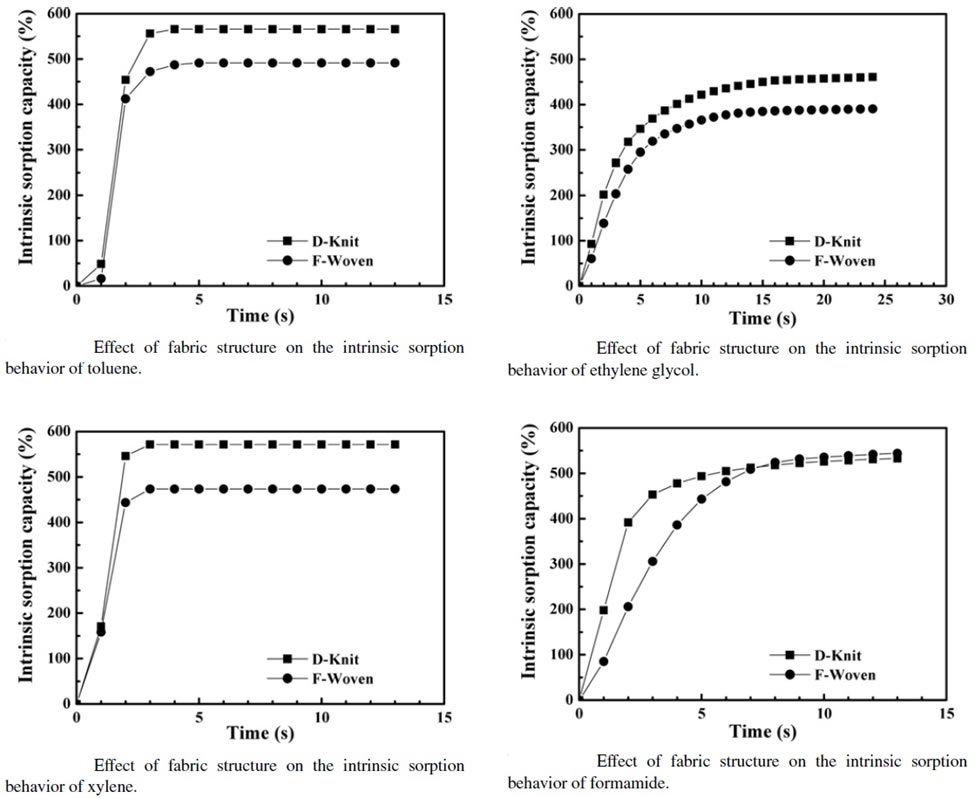
Figure 6: Sorption capacities of knit vs woven wipers with different solvents [3]

Figure 7: Sorption capacity of knit wipers with different densities [3]
Specific Weight vs Sorption Capacity
Samples C and D were composed of identical materials, fineness, and knit structure, sharing similar compositional features except for weight. Surprisingly, sample C displayed a greater sorption capacity compared to sample D. This implies that sample C possessed an enhanced ability to absorb solvent, likely attributed to a higher count of capillaries between its fibers per unit dimension [3]. Figure 8 depicts this result.

Figure 8: Weight vs sorption capacity with different solvents [3]
Note that loosely knit wipers have greater stretch and possess even greater sorption capacity. Also, knit polyester wipers are preferred in critical cleaning applications. Though there do not exist established methods to identify which wiper is suited to a specific environment, Figure 9 shows recommendations based on their historical use which may aid the companies in selecting a wiper as per their application requirements.
| Cleanroom Class | Optimal Substrate | Comments |
| ISO Class 3-4 | Polyester knit, sealed border or sealed edge | Lowest particle, fiber, NVR, and ionic levels. Wipers are sealed, laundered, and cleanroom bagged. |
| ISO Class 4-5 | Polyester knit, unsealed edge | Low particle, fiber, NVR, and ionic levels. Particle and fiber levels are higer than in sealed border or sealed edge wipers. Wipers are cut, laundered, and cleanroom bagged. |
| ISO Class 5-7 | Non-woven materials | Can be used in areas in which moderate levels of contamination control is required. |
| >ISO Class 7 | Composite materials | Can be used in situations where some particle control is needed. High absorbency. |
| Cotton | Use where heat resistance and slight abrasion characteristics are required. | |
| Polyurethan foam | Use in situations where some particle control and good absorbency are needed. |
Figure 9: Wiper selection as per cleanroom class [1]
Coventry Cleanroom Wipes
For over six decades, Chemtronics has been at the forefront of developing innovative products designed to meet the unique challenges faced by professionals in electronics manufacturing. With a commitment to quality and precision, Chemtronics has earned a reputation as a trusted partner for maintaining the reliability and performance of electronic systems.
Chemtronics' dry wipes are designed for use in controlled environments, as well as in light industrial, benchtop, and laboratory settings. They are characterized by their excellent absorbency, minimal contamination, high purity, and negligible linting.
Particularly, its Coventry Cleanroom Chamois, which is a 50/50 blend of Nylon and Polyester, provides excellent sorption capacity. Its knit structure provides microspaces that capture a greater number of particles, whether during wet or dry wiping. Moreover, its wedge-shaped microfibers remove all types of contaminants as compared to conventional round fibers.
Chemtronics’ Cleanroom laundered Coventry Poly-Wipes provide an additional layer of safeguarding for crucial applications. Our Poly-wipes are crafted from 100% continuous filament polyester, which is the benchmark for cleanroom wipes, ensuring minimal particle release. These wipes undergo laundering in our Class 10 (ISO Class 4) cleanroom environment and can be obtained with our exclusive heat-cut edge sealing process (HC) for added quality assurance.
We are available to help qualify new cleaning processes, evaluate current processes, or troubleshoot contamination issues. For more information or technical support, contact Chemtronics at [email protected] or 678-928-5845.
References
[1] B. L. S. K. Jay Postlewaite, Developments in Surface Contamination and Cleaning: Applications of Cleaning Techniques, Elsevier, 2013.
[2] C. Technology, "Successful wiping," Cleanroom Technology, 21 11 2011. [Online]. Available: https://www.cleanroomtechnology.com/news/article_page/Successful_wiping/65675. [Accessed 30 10 2023].
[3] S. H. K. &. K. W. O. Kwang Ju Lee, "Organic Solvent Absorption Characteristics of Split-type Microfiber Fabrics," Fibers and Polymers, vol. 5, no. 4, pp. 280-288, 2004.

